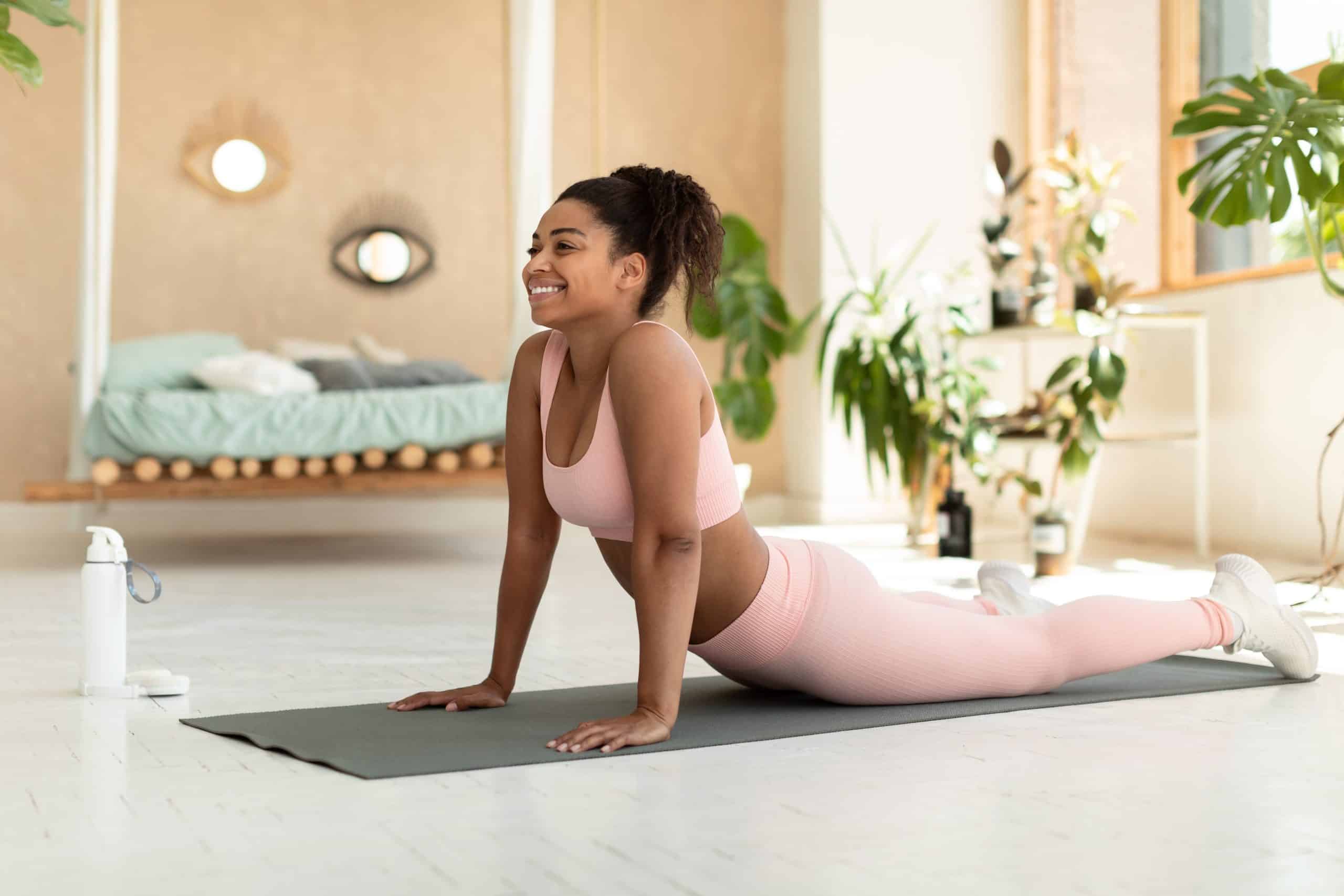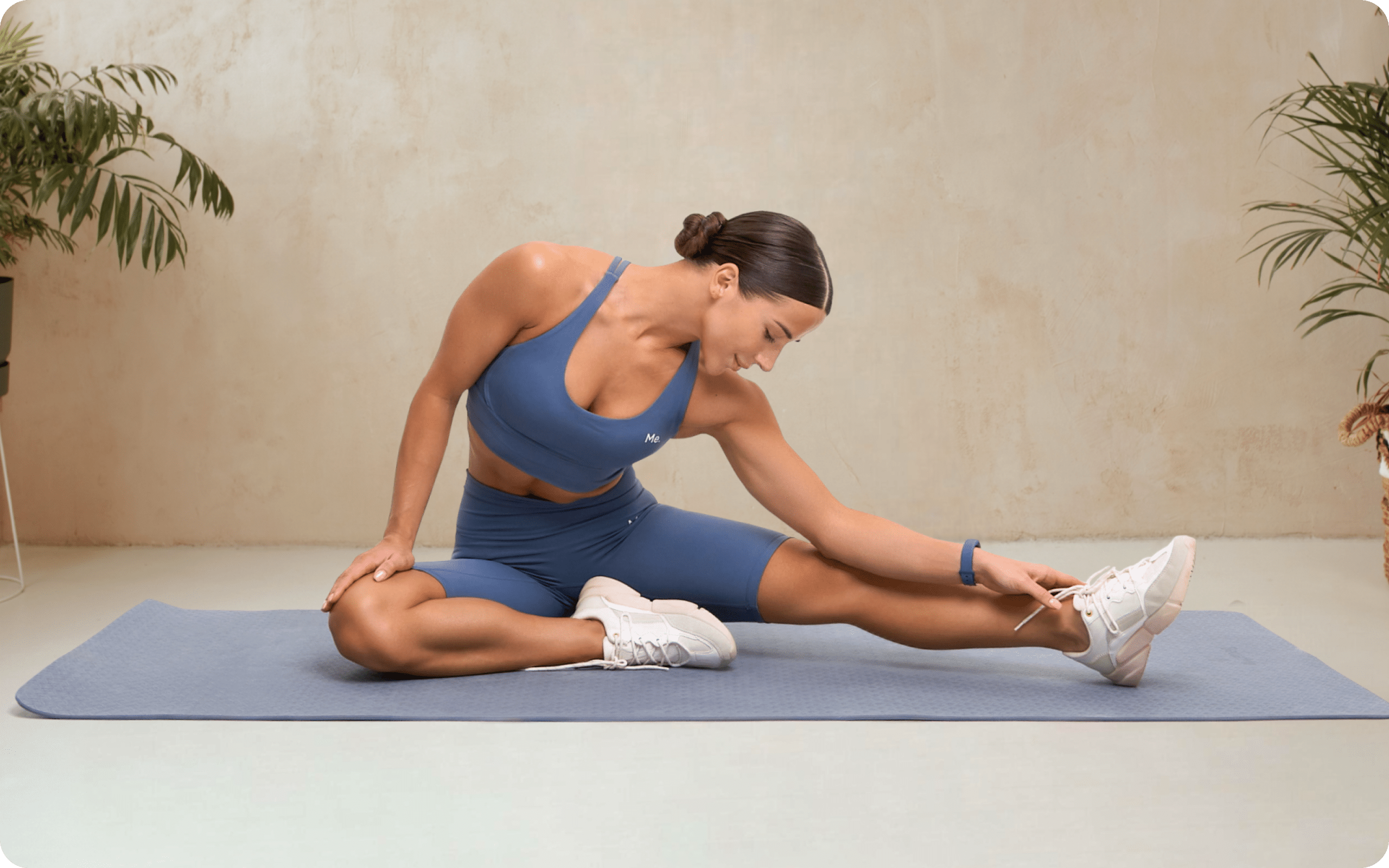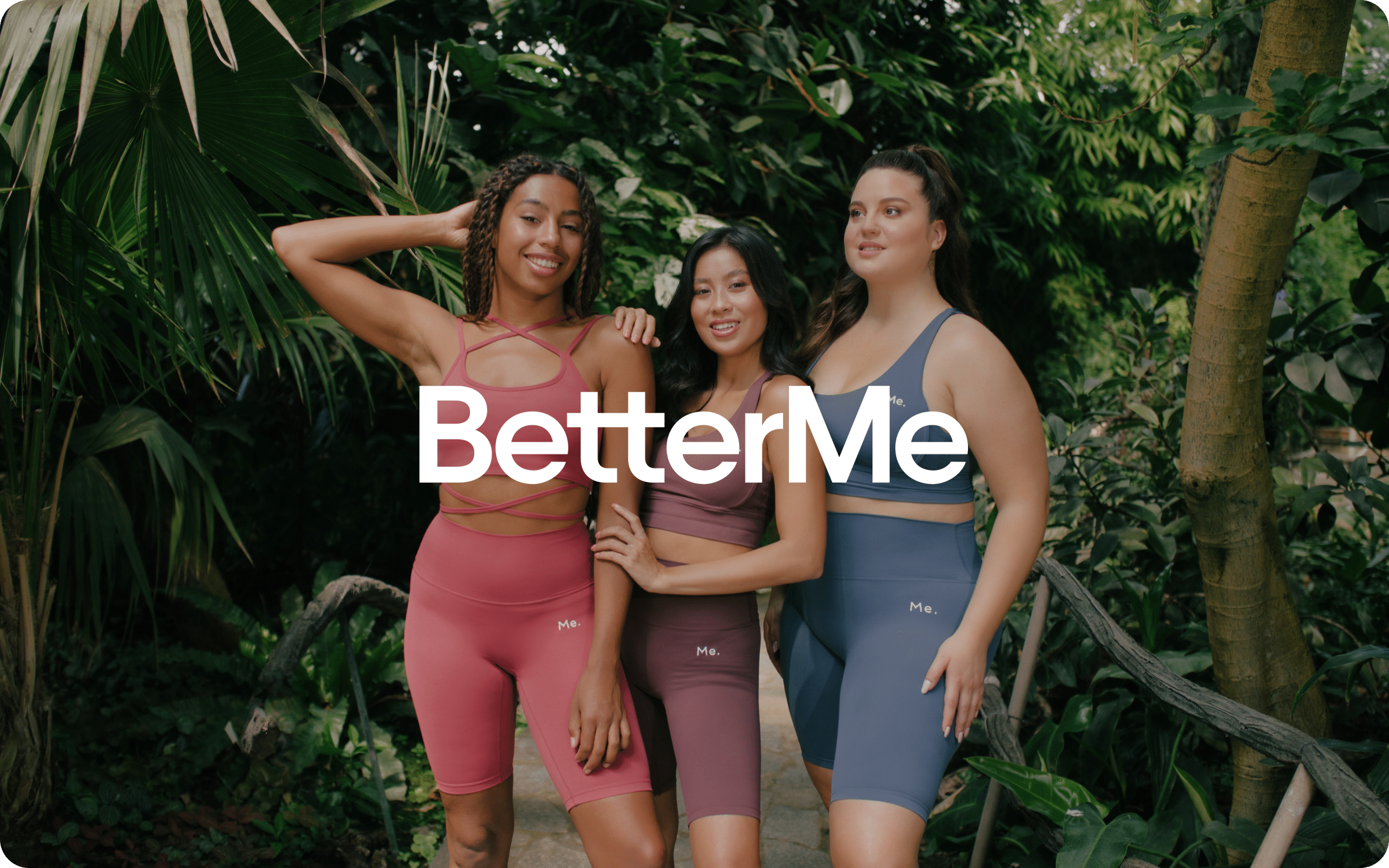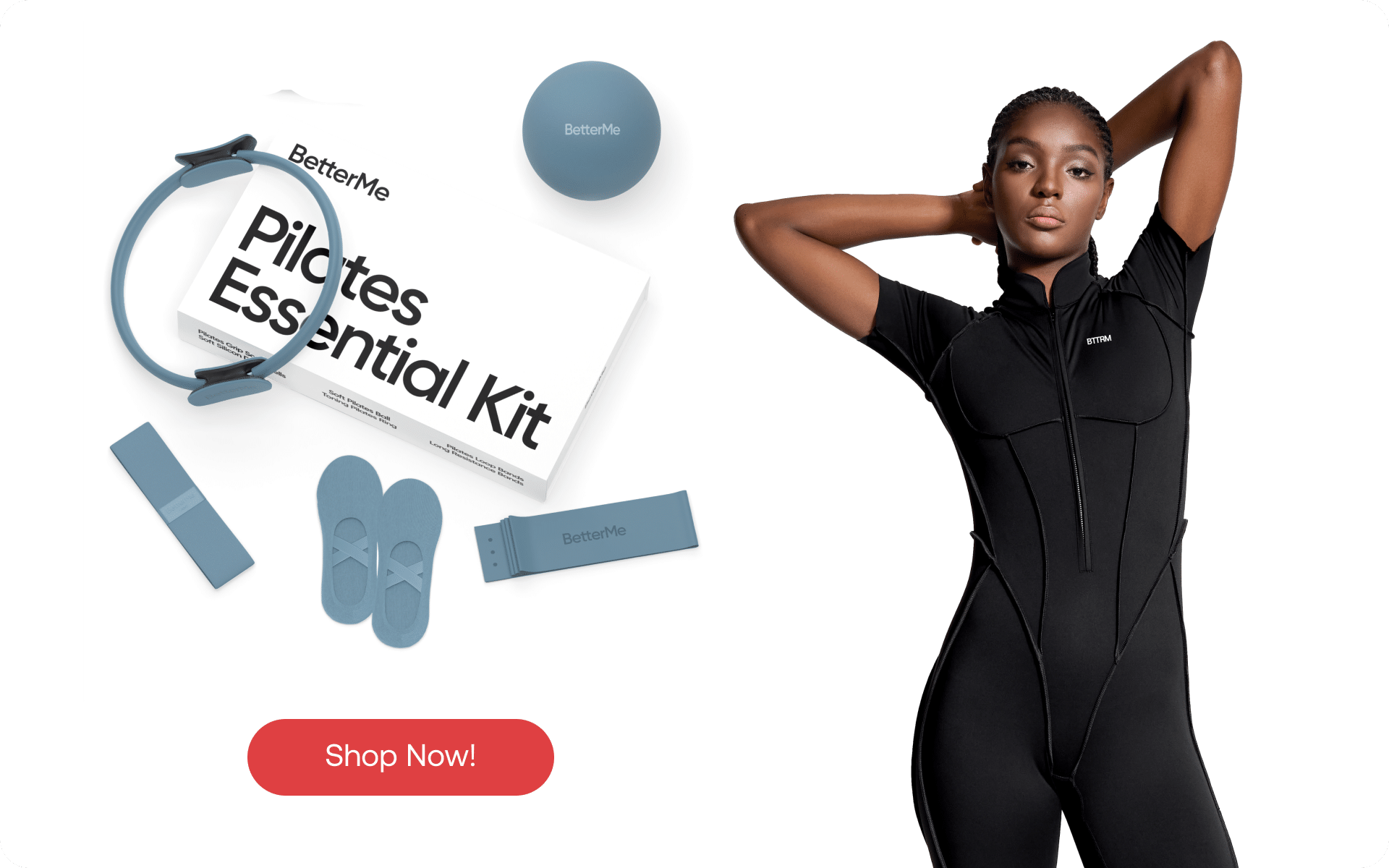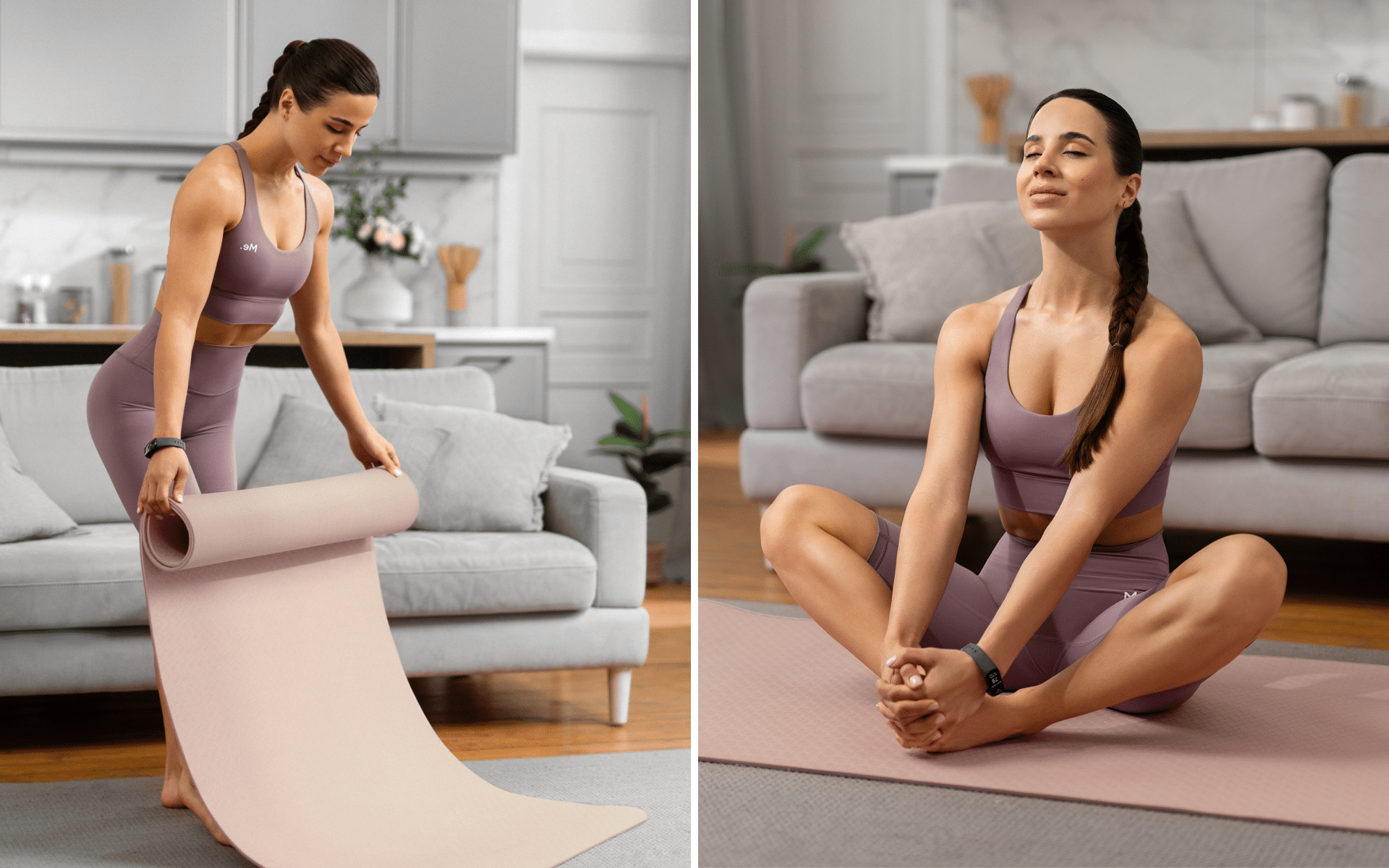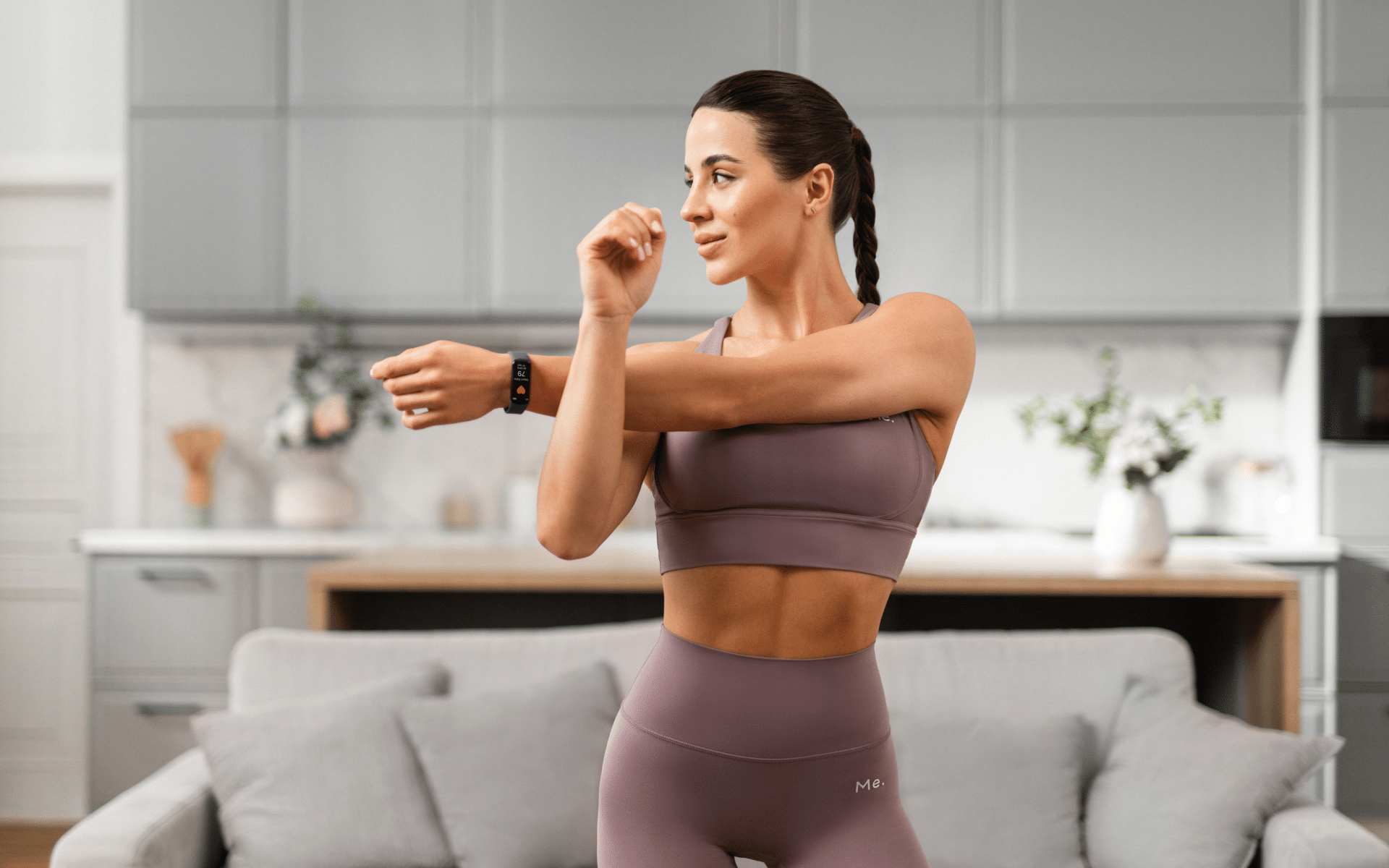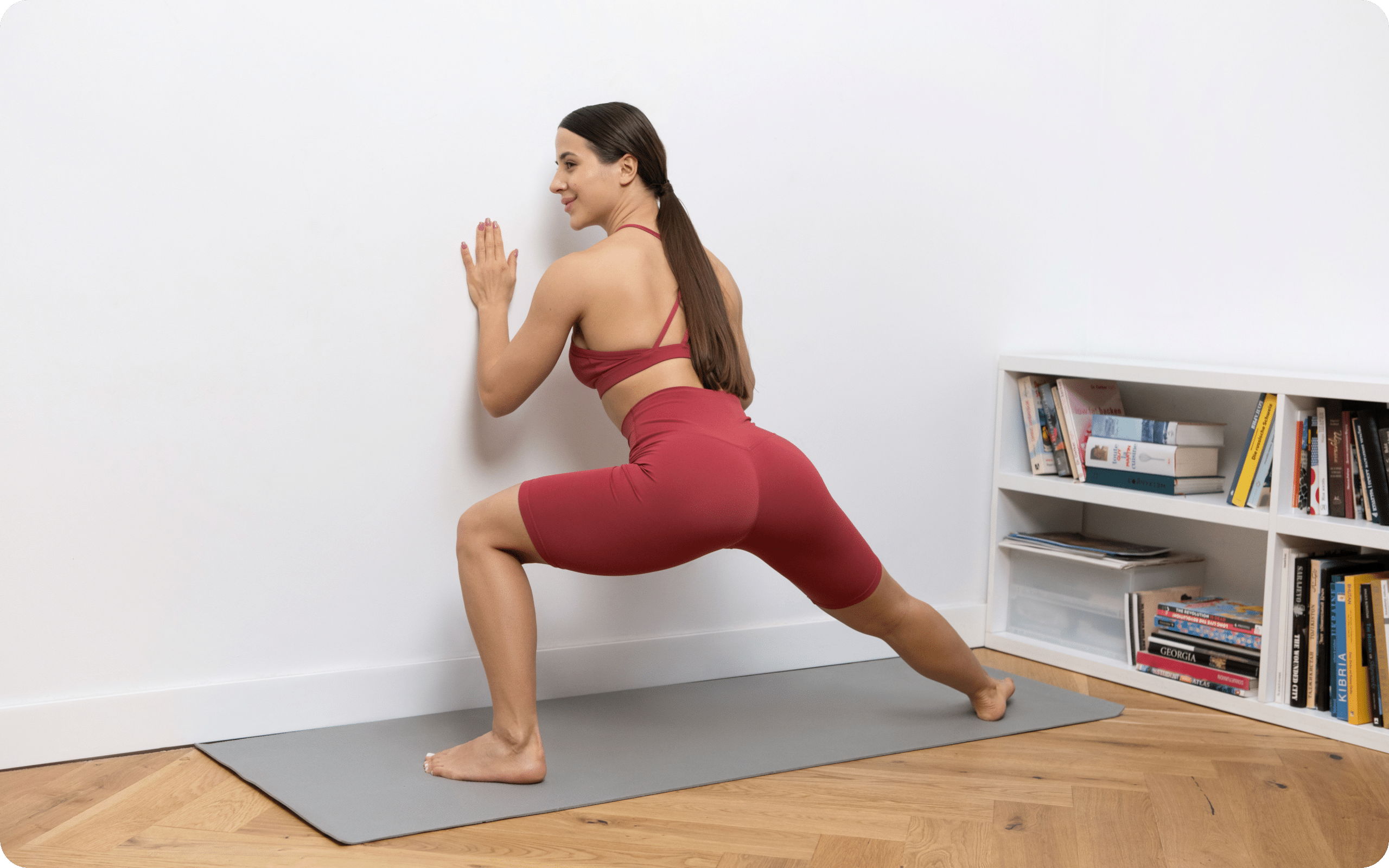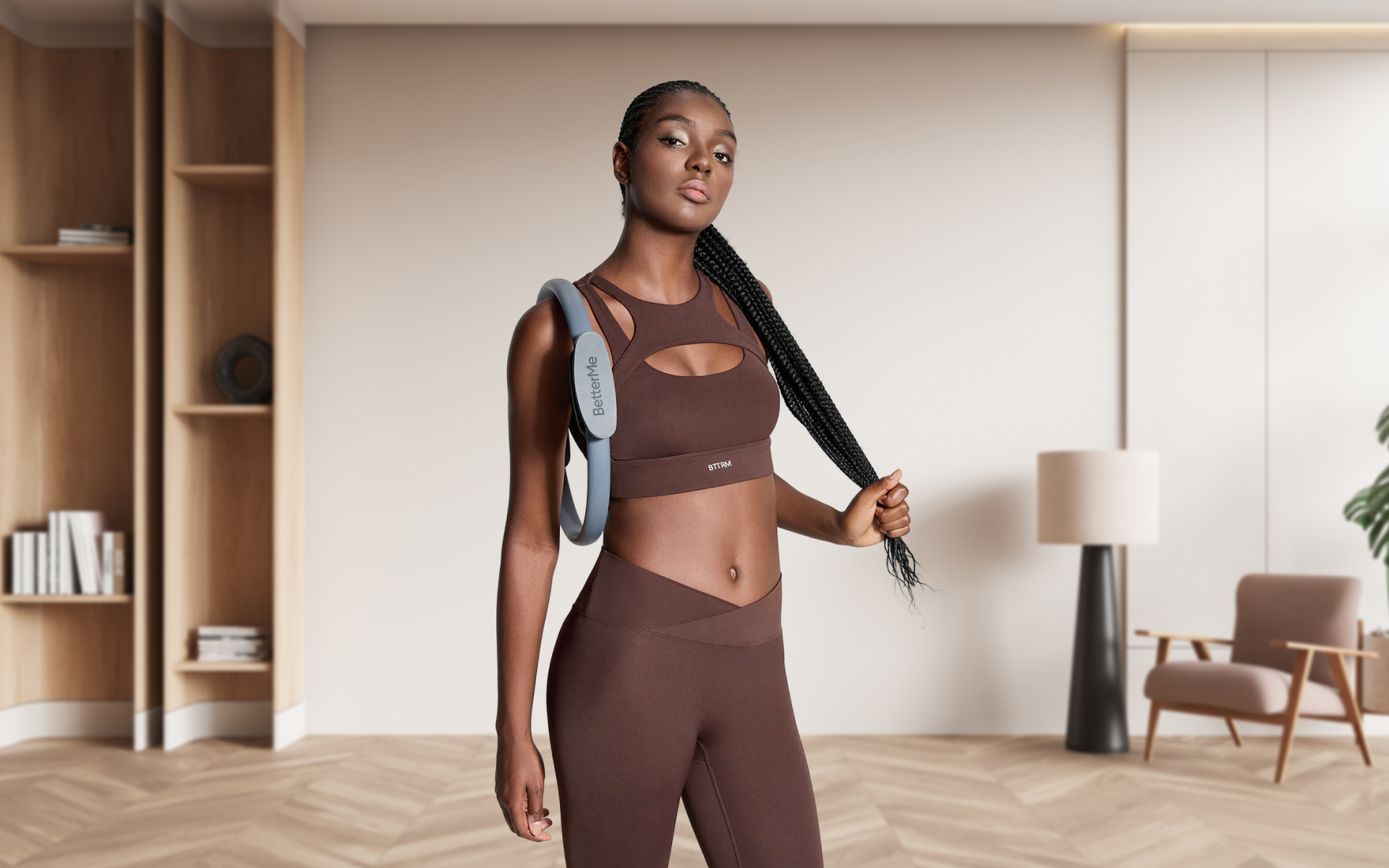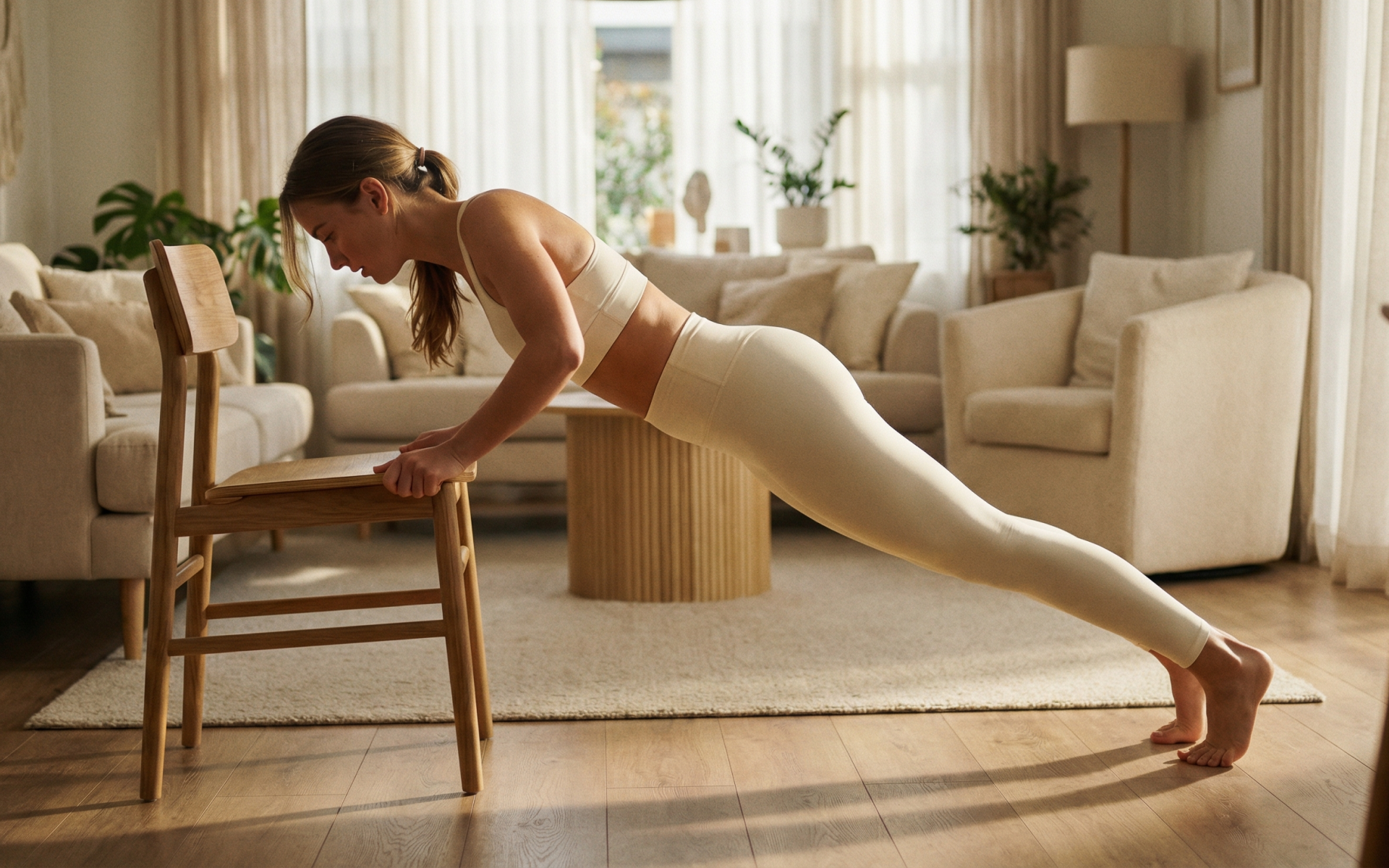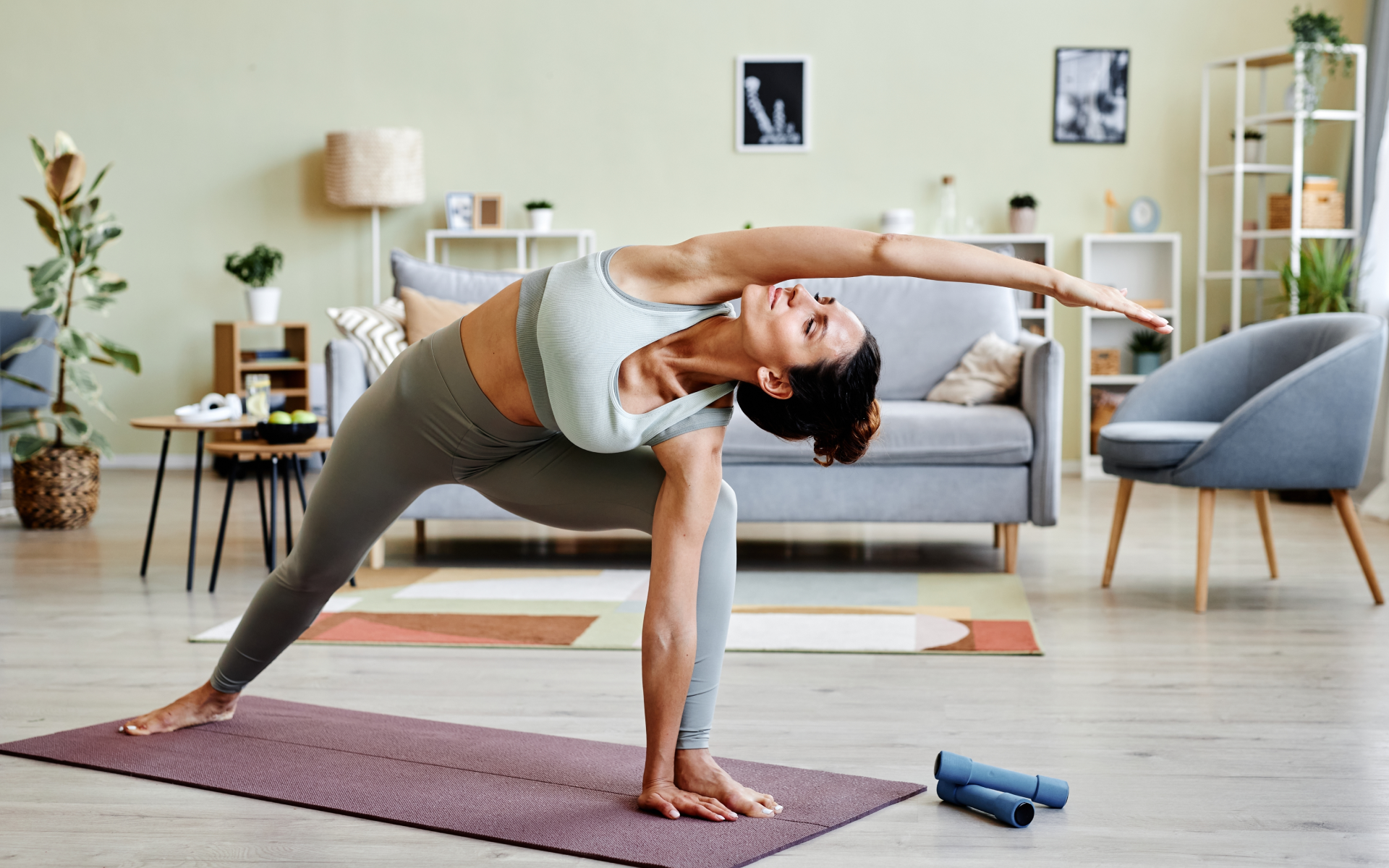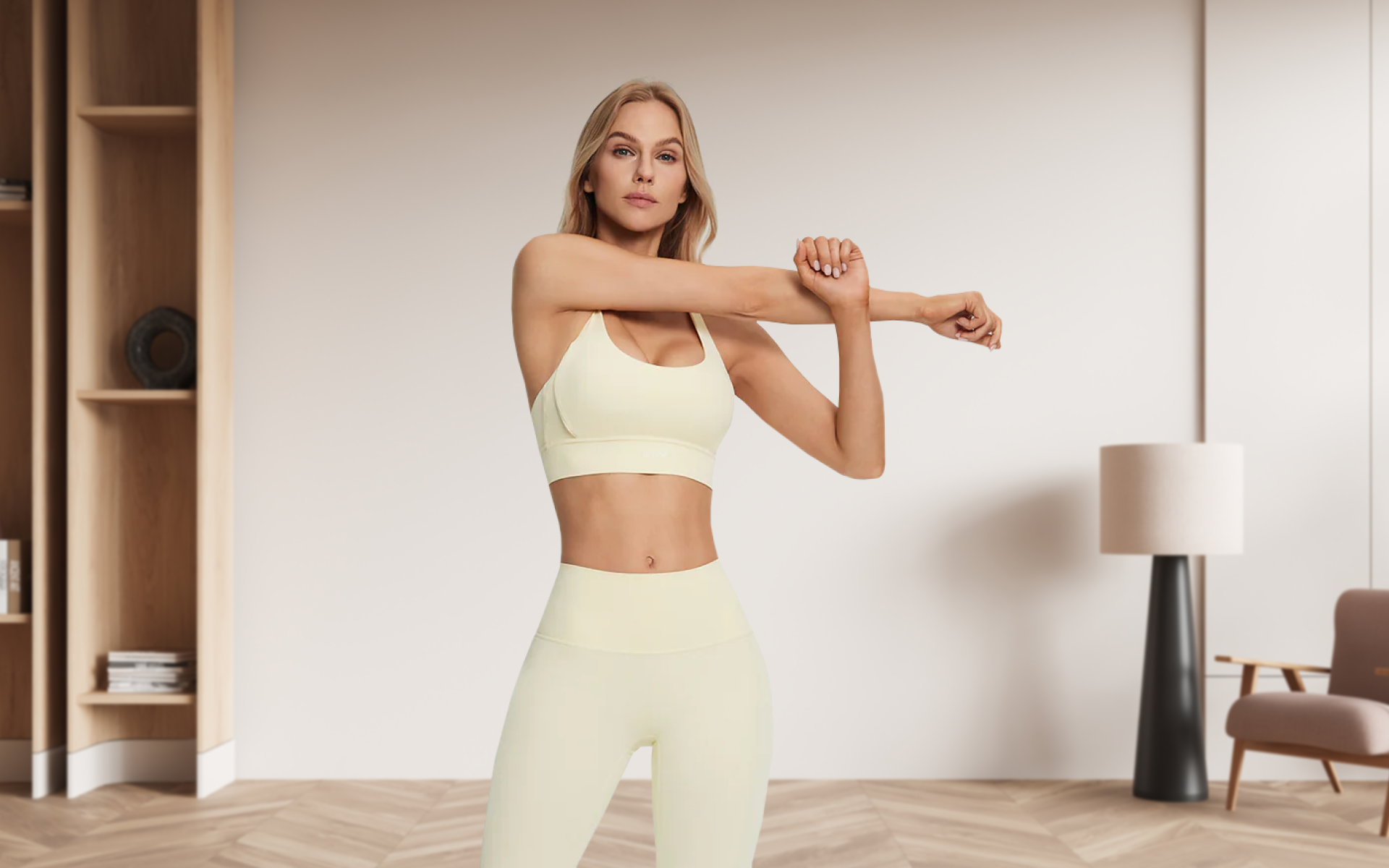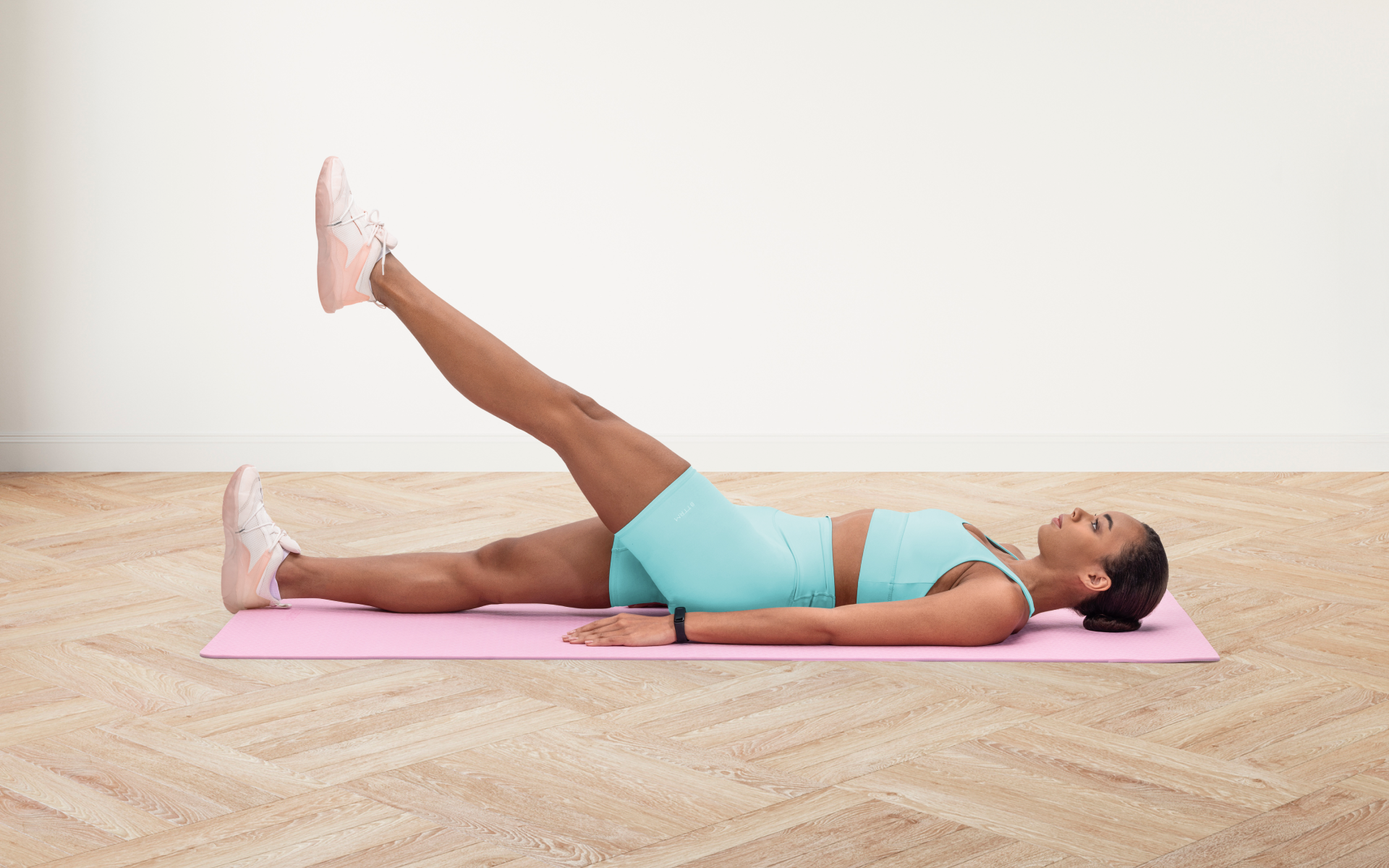As a beginner to fitness, figuring out which mode of exercise you should pick over all others can be quite a challenge. While nearly all types of exercises are good both for your mental and physical health (1, 2), when it comes to specific goals such as increasing your speed, building bigger muscles, getting stronger, etc. – some workouts are better than others.
Pilates and strength training are two very popular types of exercise that, while done very differently, provide similar results in some aspects. This overlap provides some debate when it comes to deciding the better form of exercise in the Pilates vs strength training showdown.
If you are stuck on this decision and would like more in depth information before making the right choice for you, then you are in the right place. Read on to learn the similarities and differences of Pilates vs strength training and whether you should pick one over the other or do a mix of both for the best results.
Pilates vs Strength Training: What Does Each Workout Style Entail?
Pilates is a low-impact form of exercise that was created by Joseph Pilates and taught in classes by his wife Clara Pilates. Pilates workouts are designed in a way that specifically helps you increase your muscle strength, endurance, flexibility, posture, and balance (9).
When Pilates was first created, the exercises relied on the use of the reformer, not only to perform the exercises, but also to provide resistance that helped increase muscle endurance, strength, and flexibility. (9). However, today, Pilates can be done with or without the reformer – mat and wall Pilates are perfect examples that do not require any equipment to practice.
Strength training, also known as ‘resistance training’, is a form of exercise that causes your muscles to contract against an outside resistance. The resistance in this case can be anything from your own body weight to gym machines, to free weights like medicine balls, barbells, dumbbells, kettlebells, or even resistance bands (7).
Is Pilates As Effective A Strength Training?
This depends on what you are using as a benchmark. As previously stated, Pilates and strength training tend to have very similar benefits.
Research shows that both types of exercise can lead to increased mobility, improved cognitive function, reduced weight, improved BMI parameters, lower blood glucose, improved athletic performance, better cardiovascular health and much more (10, 4, 13, 15).
If both methods of exercise produce similar benefits, are there any instances where one has an advantage over the other? Yes, each form of exercise has certain advantages over the other:
Muscle growth
When it comes to gaining muscle mass, strength training definitely takes the trophy. Remember that while Pilates can help your muscles grow, the increase will likely not be significant. While strength training utilizes a variety of external resistance, Pilates primarily uses resistance provided by an individual’s body weight and/or a reformer. Since external resistance can provide specific and varied progressive overload, it will typically result in increased hypertrophy levels when a proper training volume is applied, as opposed to bodyweight or Pilates reformer resistance.
Yanking yourself back in shape has never been so easy with our game-changing fitness app! Start transforming your life with BetterMe !
Flexibility
If strength training took the win for muscle growth (aka muscle hypertrophy) and overall strength, Pilates takes the crown in terms of improving one’s flexibility.
As effective as Pilates is at improving strength, it provides a much greater focus on mobility and flexibility when compared to traditional strength training.. When Joseph Pilates first invented this form of exercise he came up with 6 main principles: centering, concentration, fluidity, control, breath and precision (10).
Centering is at the heart of Pilates. By focusing on the body’s center (or “powerhouse”), all movements emanate from a strong core, allowing for greater freedom and range of motion in the limbs. This central stability is crucial for achieving optimal flexibility distally, and ensures that stretches and exercises are performed safely and effectively.
Fluidity is what sets Pilates apart from many traditional strength training routines. Instead of isolated, often abrupt movement, Pilates flows smoothly from one pose to another. This graceful transition between exercises mimics the natural movement patterns of the body, thereby enhancing flexibility and reducing the risk of injury.
This is not to say that traditional strength training does not contribute to improved mobility and aid in ensuring its practitioners maintain a functional level of joint and muscular range of motion, but Pilates is structured in a way that allows it to provide generally much better results in this aspect.
Is Pilates Strength Training?
Technically, yes it is.
As explained above, strength training is a form of exercise that uses an outside force to make your muscles contract. The contraction can be a result of anything from your body weight, to machinery, free weights, and even simple resistance bands.
Thinking of it like this, we can see that Pilates is a form of strength training, albeit not the kind that pops in our minds initially.
The outside force in Pilates comes from either your body weight (when doing mat Pilates) or the reformer (when engaging in classic reformer Pilates classes). A more modern Pilates variation like wall Pilates uses the wall to create resistance.
Does Pilates Tone Or Build Muscle?
It can do both.
When people talk about toning and building muscle, they often use the words interchangeably – even though in truth, they refer to 2 different things. When we talk about building muscle, we are referring to muscle hypertrophy, meaning increasing muscle mass or simply making your muscles bigger (8).
Although muscular hypertrophy has numerous involved physiologic systems and processes, building muscle primarily comes down to 2 main factors – your diet and your workout routine. Strength training, using free weights, machinery, body weight, cables, resistance bands, or any other form of external resistance, provides tension and stress to the utilized muscle groups. This stress causes microscopic damage in the affected muscle fibers, which signals the body to start repairing the microdamage. This increases protein synthesis, sending satellite cells to cling onto the damaged muscle fibers and help them restore. To prepare itself for the increased metabolic stress in future training sessions, the body restores the muscle fibers to be just a little larger and stronger than they were before. These incremental adaptations imposed by strength training lead to gradual muscle hypertrophy and strength gains. Keep in mind this is an oversimplified breakdown of the process, and there are many other factors that contribute to whether or not an individual experiences muscular growth. .
Since protein synthesis relies on the availability of amino acids, which come from dietary protein intake, ensuring adequate amounts of protein are in your diet is crucial for muscle growth and recovery. For the average individual, the Recommended Dietary Allowance (RDA) for protein is 0.8 grams per kilogram of body weight per day. However, for active individuals, particularly those who participate in regular strength training, that recommendation goes up. The RDA for protein for active individuals is typically between 1.2 to 1.7 grams per kilogram of body weight per day, though you should consult with your doctor for specific recommendations for you.
On the other hand, according to the National Academy of Sports Medicine, toning muscle refers to the act of reducing the appearance of body fat by tightening up the muscles and giving them shape (16). If your goal is to simply tone your muscles, you will be less concerned about muscle hypertrophy and more concerned about reducing your body fat percentage. This, in turn, makes the already existing muscles have a more defined appearance.
In most cases, especially with people with more body fat, muscle toning and muscle building go hand in hand. As explained above, when you workout you:
- Burn fat – which reduces the amount of body fat in the body, thus making the underlying muscle become more visible.
- Breakdown already existing muscle fibers – which stimulates increased protein synthesis and other physiological processes leading to muscle hypertrophy., This too makes the muscle become more visible.
With this in mind, we can see how Pilates can help both tone and build muscle. However, it is important to note that Pilates practitioners typically do not experience as significant hypertrophy as those participating in a well-designed weight training program paired with proper diet and recovery.
Read more: Wall Pilates for Butt: A Quick Guide for Beginners
Can Pilates Give You A Six Pack?
Yes, it can. Pilates is a very core based form of exercise. This not only improves the strength and stability of your core musculature, but can also lead to a very defined six pack.
In a study looking at the effects of core muscle activation in people with chronic low back pain, the results suggested that not only can this exercise help with the management of chronic back pain, but it may also make these muscles stronger and thicker (11). Larger muscle fibers of the rectus abdominis, in tandem with a healthy body fat percentage, produce the well defined “six pack abs” aesthetic that many people strive for..
Should I Do HIIT Or Pilates For Strength Training?
This depends on your goals. The answer could be both, one, or neither. For those looking to reap the benefits outlined earlier in this article, Pilates provides an excellent option with little to no equipment necessary. High intensity interval training (HIIT), on the other hand, is typically characterized by short bouts of high intensity exercise, usually with relatively short amounts of rest. HIIT workouts can incorporate weights or be strictly calisthenic. They are a great way to get a lot of bang for your buck in terms of caloric expenditure, cardiovascular adaptation, and some decent strength gains when programmed correctly.
However, if getting stronger is your primary goal and you are looking for the most efficient route to get there, then a traditional strength training program will likely achieve that goal the fastest. This assumes a well-structured program with optimal splits and rest time.
Pilates vs Weight Training For Weight Loss: Which One Is Better?
Both are good but if you can only pick one, we suggest going with the latter. The reason weight lifting is typically better than Pilates for weight loss is because progressive overload with weight lifting is much easier than with Pilates.
Progressive overload is a necessary component of muscle hypertrophy and strength gains, which leads to a higher basal metabolic rate (the number of calories you burn just by existing).
Pilates Vs Strength Training Vs Weight Training: What Is The Difference?
As explained above, Pilates is a form of a low impact exercise that uses apparatuses such as the reformer or simply your body weight for resistance.
Strength training and weight training can be used interchangeably in most cases. Although strength training could be thought of as the umbrella under which weight training sits, for most practical purposes they are exactly the same thing.
Weight training implies that some form of external resistance beyond your body weight is being used, while strength training includes programs that utilize your own body weight as resistance. Again, this is mostly just semantics and the terms can usually be used interchangeably.
If you wish to cinch your waist, tone up your bat wings, blast away the muffin top – our fitness app was created to cater to all your needs! BetterMe won’t give excess weight a chance!
Pilates Vs Strength Training For Runners: Which One Should You Pick?
Although it is often neglected, strength training is very important for runners. It has been shown to improve both running performance and reduce injury rates.
Pilates and traditional strength training will be beneficial for runners in different ways. Ideally, components of each would be incorporated into a runner’s training plan. However, this may come down to personal preference. Runners (and everyone else) are more likely to be consistent with a mode of exercise if they enjoy it. Since consistency is arguably the most important factor for success in athletics, runners should choose whichever they feel they will be able to stick to (or mix it up to keep it interesting!).
As stated previously, Pilates provides a great core workout. Research shows that a strong core may help runners improve their core endurance and running economy, both factors that improve running performance (3). Another study published in PLOS One found that trained runners practicing Pilates for 12 weeks helped improve their 5K performance. Researchers believe that Pilates targets the postural and locomotor muscle necessary for sustained endurance activities, which in turn improves running performance(12).
In a review published in The Journal of Strength and Conditioning Research, researchers found that strength training, especially of the lower body, using low to high intensity resistance exercises and plyometric exercise can help improve running economy (the amount of oxygen our bodies use when we run at a given intensity or speed) of highly trained middle- and long-distance runners (5).
Reformer Pilates Vs Weight Training: Which Is Better?
Both have their own distinct benefits. That said, the answer to this question depends on your goals. For anyone who wishes to increase their flexibility and core strength with a structured mind-body approach, Reformer Pilates (or any other Pilates variation) is perfect for you.
However, if your goal is to achieve the most efficient route to improved strength and muscular hypertrophy, traditional strength training is the way to go.
Read more: Pilates Full Body Workout for Beginners (No Equipment Needed)
FAQs
Do I Need To Lift Weights If I Do Pilates?
Not necessarily. Since both Pilates and weight training can improve strength, you need to balance the pros and cons of each to determine what works best for your goals. As stated earlier, an important consideration is choosing which form of exercise you enjoy enough to stick to. Consistency is the most important factor for progress, so choose one or mix it up, depending on what you prefer and which gets you to your goals the fastest!
Does Pilates Make You Look Muscular?
Typically, Pilates will not result in significant muscular hypertrophy. However, as with any form of exercise, it can increase caloric expenditure and reduce body fat when paired with a balanced diet and other positive lifestyle factors. A lower body fat may allow you to have a more toned and muscular appearance.
Does Pilates Build More Muscle Than Yoga?
Not necessarily. Both are low-impact workouts that generally use your body weight for resistance. Thus, while they may be done differently, one may not be able to build more muscle than the other.
However, in terms of muscle strength, Pilates – especially the variations that use an apparatus or the wall for resistance – might be slightly better. The resistance created by your body weight plus the reformer and/or wall could help build more strength than by only utilizing your body weight.
Can You Build Muscle With A Pilates Reformer?
Yes, you can build muscle through any form of resistance training so long as you provide an adequate stimulus to trigger the physiological factors necessary for muscular hypertrophy. This also assumes a diet that consists of adequate calories and macronutrients needed for muscle repair.
Is Pilates For Pelvic Floor Good For Women?
Yes it is. Research shows that Pilates exercises for the pelvic floor may be good for women with urinary incontinence (6, 17). These exercises could also prove to be useful for pregnant women, as they could help prevent pelvic floor injuries during pregnancy (14).
The Bottom Line
When it comes to choosing the best workout plan for you in Pilates vs strength training, we advise you to take a deeper look at your personal goals. If your aim is core strength, flexibility and lean, toned muscles, then Pilates is the routine for you.
Anyone who seeks the most efficient route to improved muscular strength and hypertrophy should make traditional strength training their priority. At the end of the day, the best workout plan is one that you stick to, week after week. Regardless of what you choose, it will not work if you are not consistent with it.
DISCLAIMER:
This article is intended for general informational purposes only and does not serve to address individual circumstances. It is not a substitute for professional advice or help and should not be relied on for making any kind of decision-making. Any action taken as a direct or indirect result of the information in this article is entirely at your own risk and is your sole responsibility.
BetterMe, its content staff, and its medical advisors accept no responsibility for inaccuracies, errors, misstatements, inconsistencies, or omissions and specifically disclaim any liability, loss or risk, personal, professional or otherwise, which may be incurred as a consequence, directly or indirectly, of the use and/or application of any content.
You should always seek the advice of your physician or other qualified health provider with any questions you may have regarding a medical condition or your specific situation. Never disregard professional medical advice or delay seeking it because of BetterMe content. If you suspect or think you may have a medical emergency, call your doctor.
SOURCES
- Benefits of Physical Activity (2023, cdc.gov)
- Effectiveness of physical activity interventions for improving depression, anxiety and distress: an overview of systematic reviews (2023, bjsm.bmj.com)
- Effects of 8-week core training on core endurance and running economy (2019, ncbi.nlm.nih.gov)
- Effects of Pilates on health and well-being of women: a systematic review (2023, bfpt.springeropen.com)
- Effects of Strength Training on Running Economy in Highly Trained Runners: A Systematic Review With Meta-Analysis of Controlled Trials (2016, pubmed.ncbi.nlm.nih.gov)
- Effects of the pilates method on the pelvic floor muscles: a systematic review (2023, researchgate.net)
- Introduction to Strength Training (n.d., research.med.psu.edu)
- Muscle hypertrophy and muscle strength: dependent or independent variables? A provocative review (2020, ncbi.nlm.nih.gov)
- Pilates: how does it work and who needs it? (2011, ncbi.nlm.nih.gov)
- Pilates (2011, ncbi.nlm.nih.gov)
- Pilates to Improve Core Muscle Activation in Chronic Low Back Pain: A Systematic Review (2023, ncbi.nlm.nih.gov)
- Pilates training improves 5-km run performance by changing metabolic cost and muscle activity in trained runners (2018, journals.plos.org)
- Resistance training is medicine: effects of strength training on health (2012, pubmed.ncbi.nlm.nih.gov)
- The Effects of the Pilates Method on Pelvic Floor Injuries during Pregnancy and Childbirth: A Quasi-Experimental Study (2021, mdpi.com)
- The Health Benefits of Resistance Exercise: Beyond Hypertrophy and Big Weights (2023, journals.lww.com)
- TONING VS. BULKING UP: WHAT’S THE DIFFERENCE? (n.d., blog.nasm.org)
- Yoga and Pilates compared to pelvic floor muscle training for urinary incontinence in elderly women: A randomised controlled pilot trial (2022, pubmed.ncbi.nlm.nih.gov)
